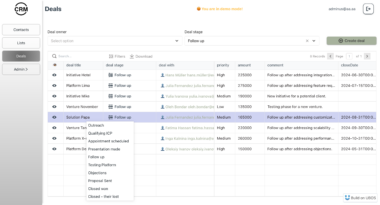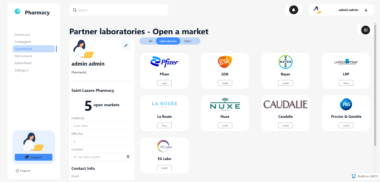Overview of MCP Server for Claude Desktop
The MCP Server is a cutting-edge solution designed to seamlessly integrate with Claude Desktop, offering a secure and efficient way to execute shell commands through the Model Context Protocol (MCP). This Node.js implementation is a beacon of innovation, providing AI models with the ability to interact with shell commands in a controlled and secure environment. This overview delves into the unique features, use cases, and the synergy between the MCP Server and the UBOS platform.
Key Features
MCP-Compliant Server Implementation
- The server adheres to the Model Context Protocol standards, ensuring compatibility and seamless integration with AI models and applications.
Secure Command Execution
- Equipped with blacklist protection, the server prevents the execution of potentially harmful system commands, safeguarding critical system components.
Command Existence Validation
- Before executing any command, the server verifies its existence, ensuring only valid commands are processed.
Standard I/O Based Transport
- Utilizes standard input/output for communication, facilitating reliable data exchange between components.
Robust Error Handling and Graceful Shutdown
- The server is equipped with comprehensive error handling mechanisms and supports graceful shutdown procedures, enhancing reliability and user experience.
Use Cases
- AI Model Integration: The MCP Server allows AI models to execute shell commands, enabling them to interact with external data sources and tools seamlessly.
- Secure Development Environments: Developers can leverage the server’s security features to create controlled environments for testing and deployment.
- Enterprise Automation: The server can be integrated into enterprise systems to automate routine tasks, improving efficiency and productivity.
- Enhanced Security Protocols: With its robust blacklist and validation features, the server is ideal for environments where security is paramount.
Security Features
The MCP Server is fortified with several security measures, making it a reliable choice for secure shell command execution:
- Command Blacklisting: Blocks execution of dangerous system commands, preventing unauthorized system modifications and protecting against file system destruction.
- Command Validation: Ensures only valid commands are executed, providing clear error messages for any invalid attempts.
UBOS Platform Integration
The MCP Server is a vital component of the UBOS platform, a full-stack AI Agent Development Platform focused on bringing AI Agents to every business department. UBOS facilitates the orchestration of AI Agents, enabling them to connect with enterprise data and build custom solutions using LLM models and Multi-Agent Systems.
Installation and Configuration
To install the MCP Server, execute the command npx mcp-shell. For integration with Claude Desktop, configure it using npx mcp-shell config or add npx -y mcp-shell manually to your configuration. Once configured, restart Claude Desktop to see the MCP tool listed on the landing page.
Development and Customization
Developers can modify the server’s security settings by editing the BLACKLISTED_COMMANDS set or enhancing the validateCommand function to introduce additional validation rules. The command parsing logic can also be customized in the CallToolRequestSchema handler to meet specific needs.
In conclusion, the MCP Server is a robust, secure, and versatile solution that enhances the capabilities of AI models within Claude Desktop. Its integration with the UBOS platform further amplifies its utility, making it an indispensable tool for developers and enterprises alike.
Shell MCP Server
Project Details
- hdresearch/mcp-shell
- mcp-shell
- MIT License
- Last Updated: 4/18/2025
Categories
Recomended MCP Servers
A Model Context Protocol (MCP) server that provides Nostr capabilities to LLMs like Claude.

MCP server to run MATLAB code from LLM via the Matlab Engine API.
A Minecraft MCP Server powered by Mineflayer API. It allows to control a Minecraft character in real-time, allowing...
Databricks MCP Server

Interact with the Paddle API using AI assistants like Claude, or in AI-powered IDEs like Cursor. Manage product...
A Model Context Protocol (MCP) server that provides tools for AI, allowing it to interact with the DataWorks...
APISIX Model Context Protocol (MCP) server is used to bridge large language models (LLMs) with the APISIX Admin...

MCP server for code collection and documentation



A Model Context Protocol (MCP) server that enables AI assistants to perform network scanning operations using NMAP

本项目通过将 MCP 协议转换为 MQTT 协议,我们能够利用强大的大型语言模型(LLMs),就能轻松操控您的智能家居、机器人或其他硬件设备。
 From vibe coding to vibe deployment. UBOS MCP turns ideas into infra with one message.
From vibe coding to vibe deployment. UBOS MCP turns ideas into infra with one message.






